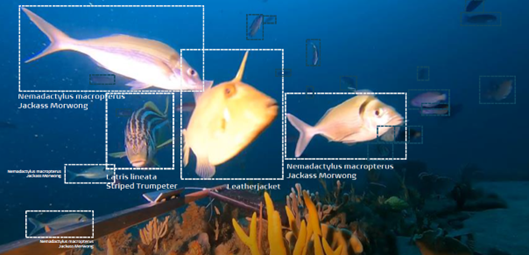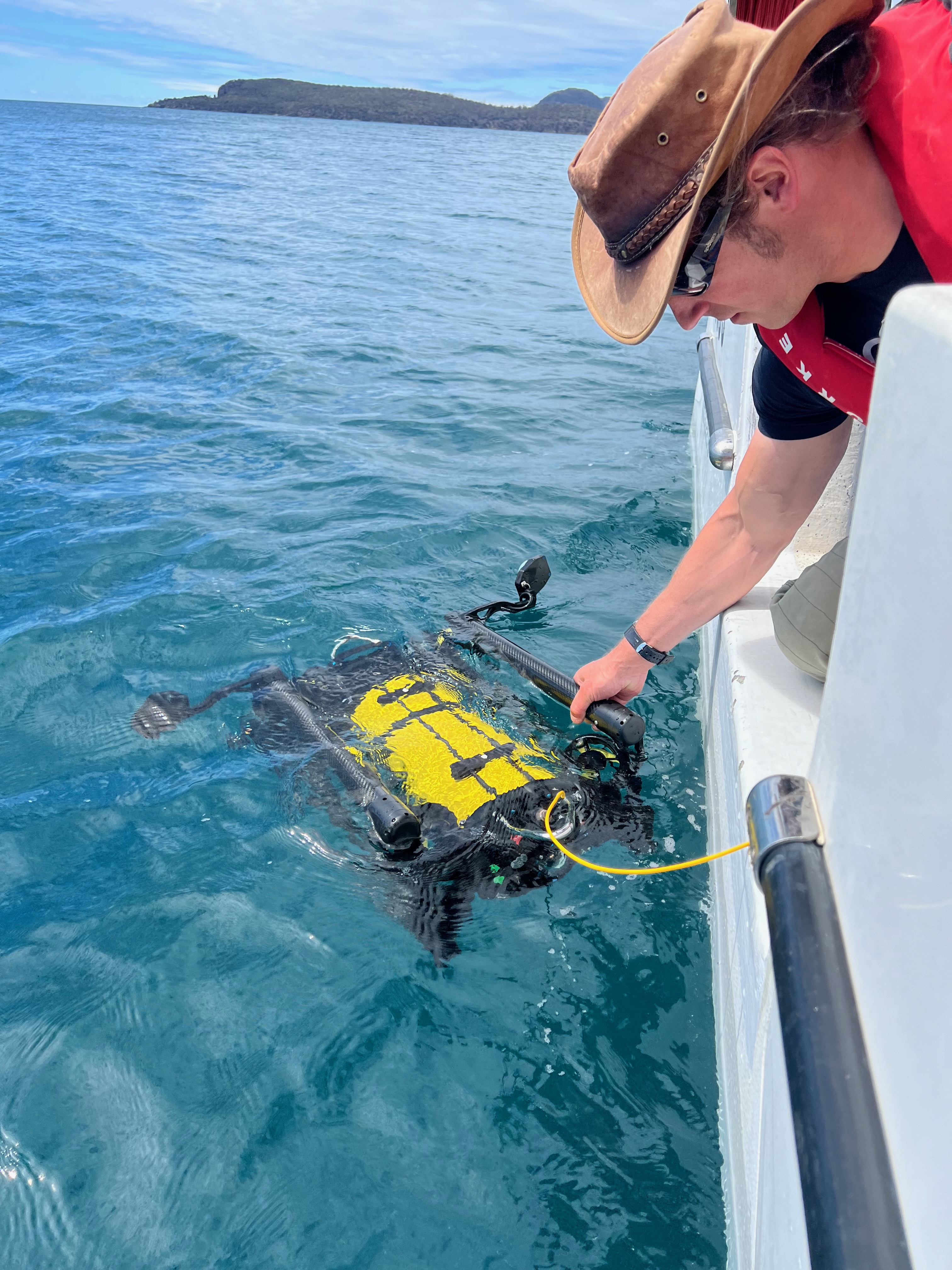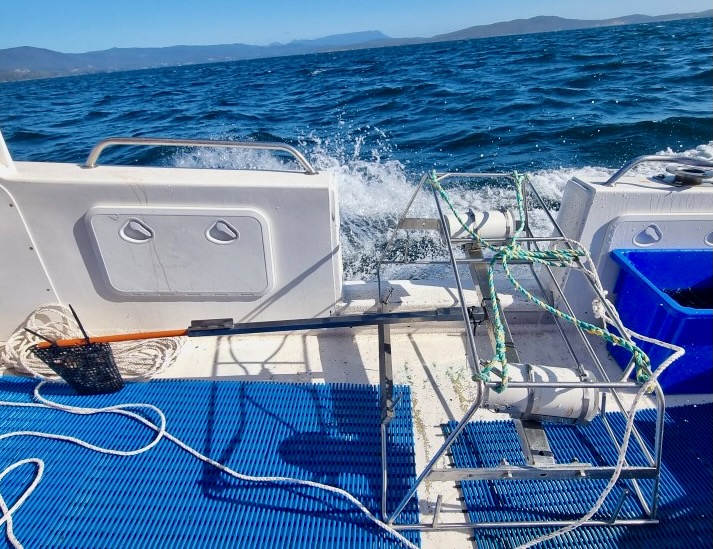AI tools are being developed to complement fishery-dependent data to improve stock assessments for Tasmanian fisheries.
By Catherine Norwood
Key target scalefish species are the focus of efforts to train Artificial Intelligence (AI)-powered fish recognition systems as part of new research to improve stock assessments in Tasmania’s scalefish fishery.

The FishID program, developed by Griffith University in Queensland, is being trained to detect and recognise 10 high-priority Tasmanian fish species in underwater video surveys. Next on the agenda, but more difficult to achieve, FishID will be trained to accurately measure the length of each fish detected as well.
Dr Alyssa Marshell at the University of Tasmania’s Institute for Marine and Antarctic Studies (IMAS) is leading the FRDC-funded research project (2023-002) and says that accurate fish length data is key to providing critical insights into stock structure and status.
Training AI identification
In the first stage of the three-year project, researchers have gathered thousands of images from historical baited remote underwater video (BRUVs) and remotely operated vehicles (ROV) surveys to help train the AI models to detect Tasmanian fish species.

The research team has also conducted recent BRUV and ROV surveys to fill identified gaps in the available image data.

“The AI models need thousands of images from different habitats and different light conditions to be effectively trained,” says Alyssa.
“The AI models can already reliably identify Jackass Morwong (Nemadactylus macropterus), Southern Sand Flathead (Platycephalus bassensis) and Striped Trumpeter (Latris lineata) with more than 90 per cent accuracy, but we need more images of other key species.
“The real power in this approach comes once you have the videos and data collected over many years and you can start to track changes in the population length structure and abundance.”
She adds that once the AI processing is set up and is effective, the video approach is also relatively cost-effective and independent from the factors that affect data collected from fishery-dependent sampling.
Fisher collaboration
To complement length data collected from video surveys, commercial scalefish fishers have voluntarily taken the initiative to gather length data for the project during their routine fishing trips.
New electronic fish measuring boards will be supplied to volunteer commercial fishers in Tasmania’s Scalefish Fishery from around the state. Fishers will subsample up to 100 fish from their catch and measure them all – including the small fish that will be returned to the water.
“Industry members actually came to us with this request to collaborate and help us to collect data, and it’s great to have such good industry support and collaboration in the project,” says Alyssa.
Industry catch and effort logbook data is already used in stock assessment models, which provides weight for the total catch, but not the number of fish, or their length.
The additional data that fishers voluntarily provide as part of this project will improve stock assessments, especially for data-poor species, and species with high recreational catches.
If the electronic fish measuring boards on commercial scalefish vessels are a success, the project team plans to recruit recreational charter boat operators to gather similar length data for their catch. This could also be expanded to gather fish length data from commercial fish markets.
Alyssa says the AI model development and collaboration between IMAS fisheries scientists and fisheries stakeholders is key to developing a novel and cost-effective ongoing annual monitoring program.
“This initiative will not only enhance Tasmanian stock assessments but also serve as a model for fisheries monitoring programs nationally.”
Related FRDC project
2023-002: Developing a cost-effective and novel scalefish fisheries monitoring program to inform fisheries management in Tasmania





